Keces P14 Ultra Low Noise Linear Power Supply – IV Zones Upgrade HiFi Stage Booster
Keces P14 is a $1749 USD 14A Ultra Low Noise Power Supply with a high quality toroidal transformer inside, to provide pure power to your devices. While most power supply experiments can be disputable, having a high-end power supply is essential for DACs, AMPs, and devices that require a DC or Direct Current.

Introduction
Keces also named Huikang Electronic Co., LTD is a designer and producer of high-end audio equipment from Taiwan, being one of the companies with the best production quality and reliability out there. As products designed by Keces are very popular, they are sold through multiple HiFi sale channels, including local HiFi and Stereo shops, and also bigger retail stores. Warranty is usually provided by the seller / shop as most products are rather solid and heavy, and it is more practical to ask the seller shop for warranty than using international shipping to Taiwan. As an Amazon Influencer, I earn from qualifying purchases, and using the purchase links in my reviews helps me maintain this website and Youtube Channel. Huge thanks to Keces for providing us with the sample for this review.
PROs – Audible, immediate improvement in sound and clarity, multiple voltages and IV zones that can work at the same time with no degradation even if all of them are used, practically no audible noise, can heavily improve the dynamics, control and sound quality of every component it is powering, the USB isolator supports high resolution Data Rates, and P14 ses the Quantum Resonance Technology to create the most beautiful and cohesive sound possible. Gorgeous looks and frontal design. It never gets hot, even if left on for days in a row.
Cons – Quite heavy and large.
Product Link
Official link – https://www.kecesaudio.com/P14.html
Amazon – https://amzn.to/3YO385J
Build Quality/Aesthetics
Keces P14 is the most beautiful Ultra Low Noise Regulated Linear Power Supply you will ever see on the face of this wonderful planet, and at the front you will see multiple dials and controls, which for someone who’s even the tiniest bit into steampunk and geeky tech will be a delight to have on their work bench and desk. The front of the device has two dials that can be lit, with a beautiful blue light, and you can see a dimly lit green light shining too from behind the dials, if you turn off the blue light.
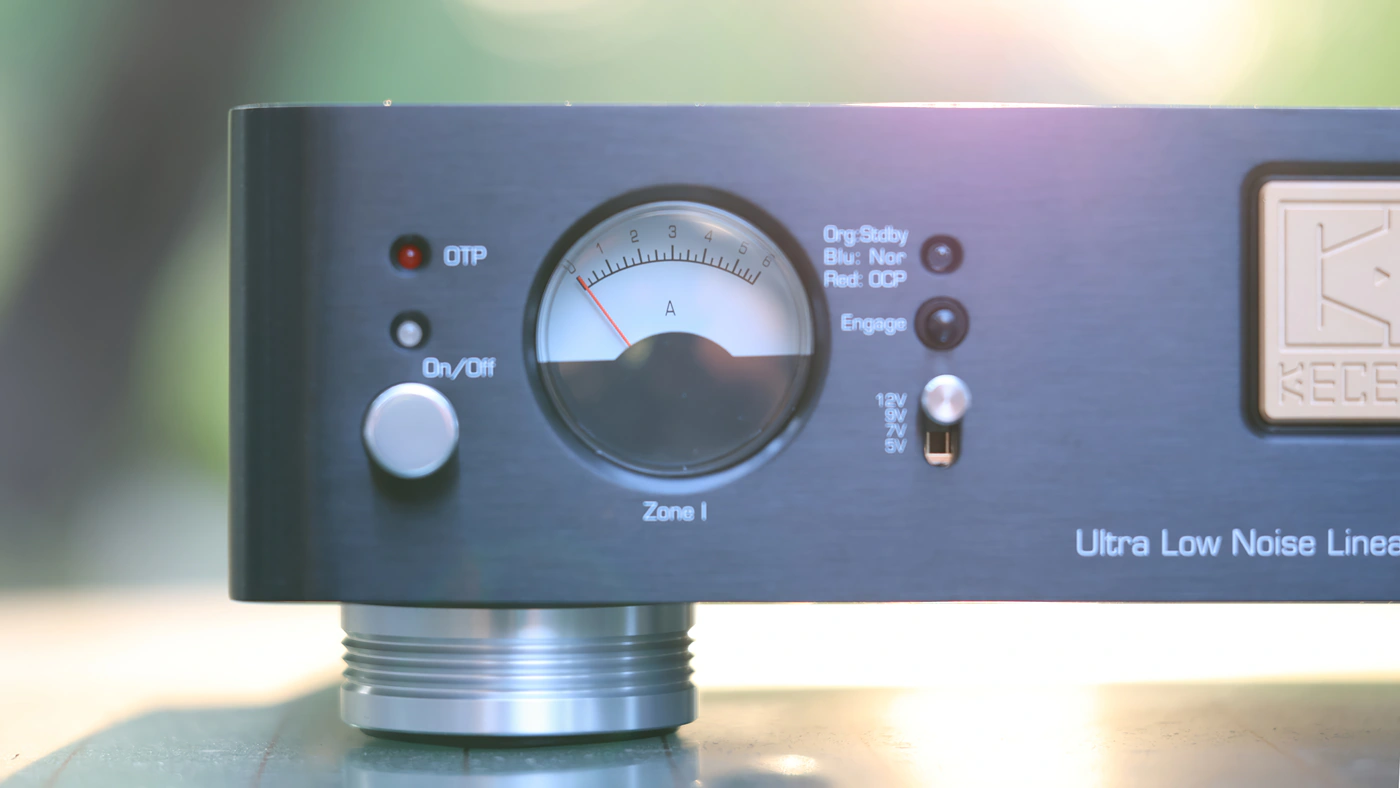
We have a large on/off switch at the front, and above it we have an OTP or Over Temperature LED light that will warn you if P14 runs too hot. I find this hubris as P14 has such an efficient cooling that I am willing to award it the coolest running Power Supply ever created as an award. We have the voltage selector and an engagement button next to each dial, and everything is arranged symmetrically relative to the central Keces Logo which creates a really beautiful looking device.
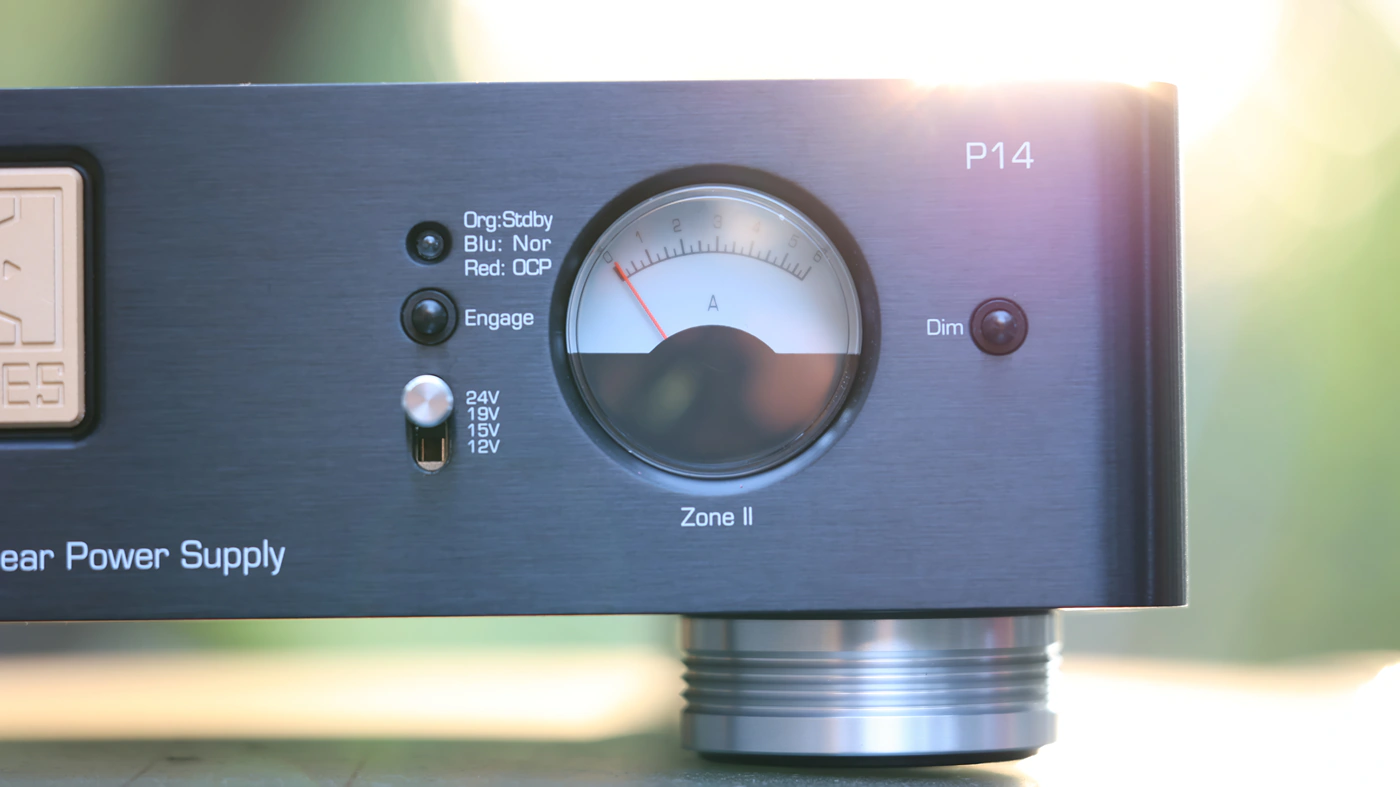
The idea of P14 is to provide a clean and stable electrical signal, of a much higher quality than any Switching Power Supply, relying on a totally analogue design and powerful toroidal transformer inside. Each of the 4 Output channels has a separate ground to keep things noise-free, and P14 will have zero noise, and eliminate any 50Hz hum, even at maximum load. Keces also uses the Quantum Resonance Technology in P14, which enables all electromagnetic components to resonate at the same time to improve the coherency and synchronization of the sound. We have both Over Temperature and Over Current Protection in the event of an accident.
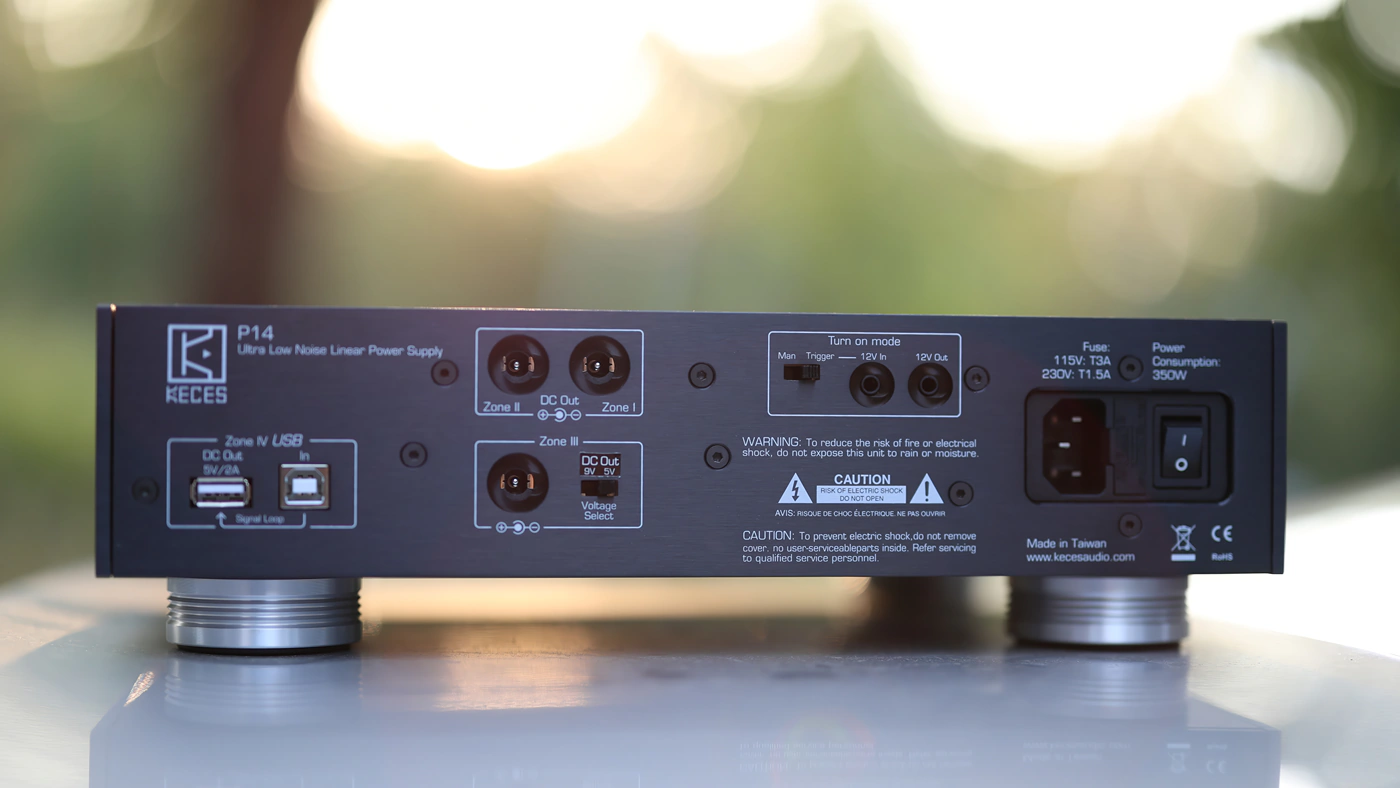
Besides offering a clean power supply, and powering external devices, P14 also has a USB Isolator, with a USB Type B input, a popular standard in audio, and a USB Type A output, which will work even if the next cable is a Type A to Type C cable. This will work even better than any USB cleaner, Galvanic isolator or USB cleaner, and is the high-end flagship version of those devices like JDS Labs Synapse or ifi iPurifier. This USB isolator supports USB 2.0 full speeds, up to 12 Mbps. The input voltage is switchable between 220V and 110V, and the 220V input has a T1.5A Fuse while the 110V input has a T3A fuse protecting P14. Each zone has its own power level availability.
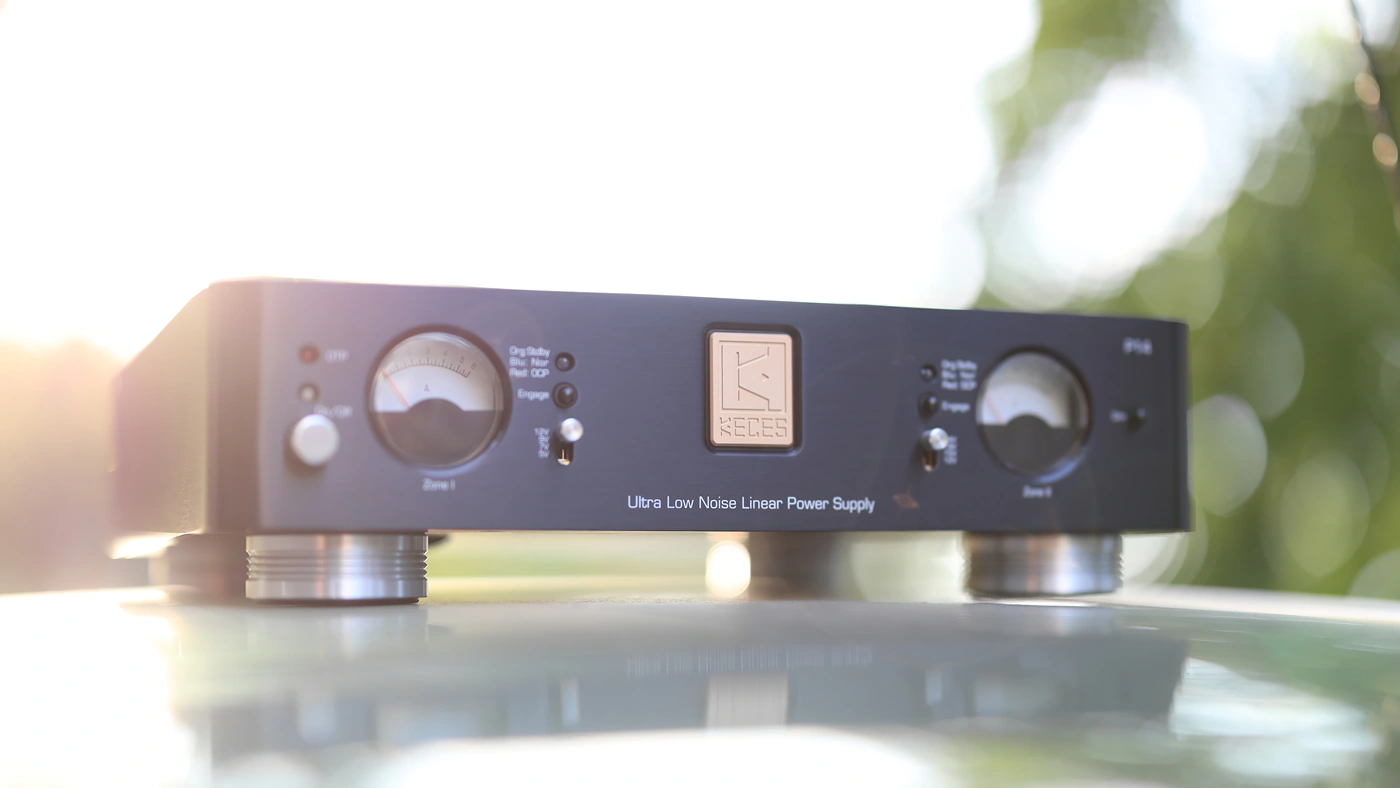
Zone I can deliver 5V / 7V / 9V / 12 V with a 4A Amperage.
Zone II can deliver 12V / 15V / 19V / 24V with a 6A Amperage
Zone III can deliver 5V / 9V with a 2A Amperage
Zone IV can deliver a 5V 2A power, and is the USB Isolator.
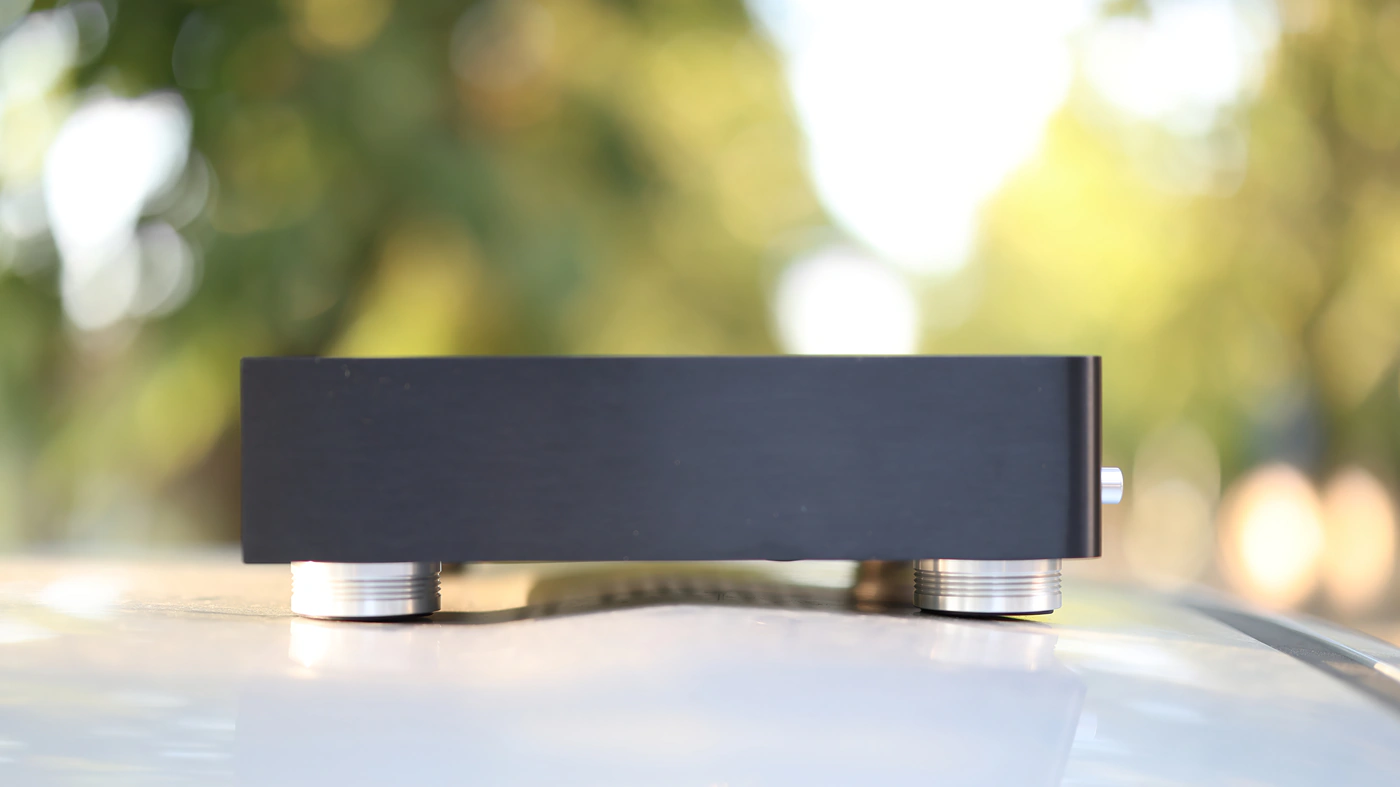
Keces P14 will find a home in multiple applications, including Audiophile High-End systems, Machine Protection, Measurement devices and test gear, and even Medical Environment. While we typically like to think that USB is clean enough, truth is most power delivery has a lot of noise which is detectable easily even by an untrained ear.
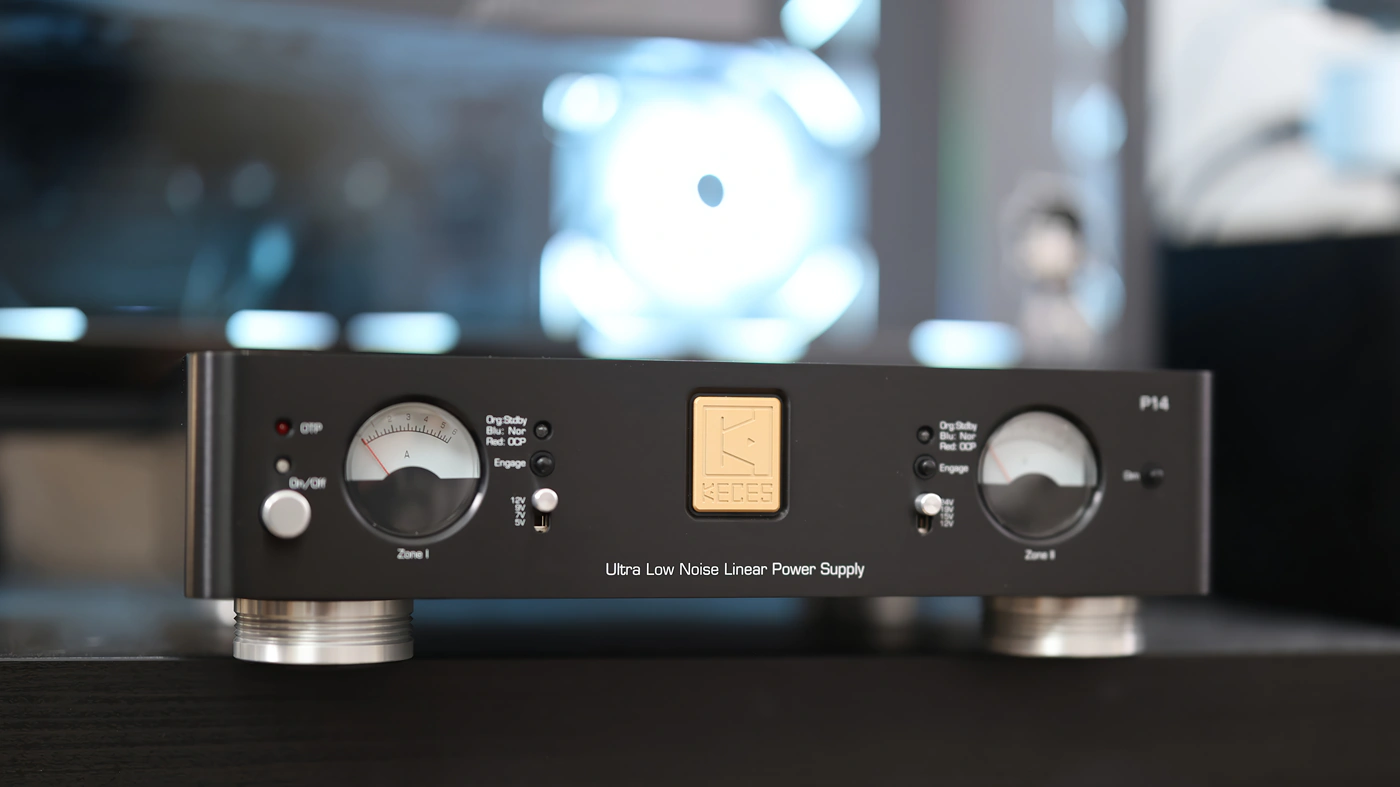
The Ripple noise is lower than 100 uV at full power, and lower than 10uV at 60% load. P14 has a standby power consumption of 0.5 Watts, and a Maximum Power Consumption of 500 Watts. The construction is entirely made of aluminum, and the whole device has a weight of 7kg. The Quantum Resonance Technology employed provides a subtle field that makes all electromechanical components resonate in unison to improve coherence and timing. The circuit of P14 does not use ICs, only full analog design.
Subjective Usage
Keces P14 looks marvelous when installed in my current system, and it is a beautiful Power Supply, with those bright blue lit Amperage meters on each side, and those bright red indicator needles. The whole device is incredibly sturdy and solid, and it takes around 10 minutes to set it up. A bit of attention should be given to setting it to Main instead of Trigger as otherwise P14 will not start in the absence of a Trigger signal. I have been able to use it just fine here in Romania, with a high-end Power Cord from Audience, the forte F5 High-End Power Cord.
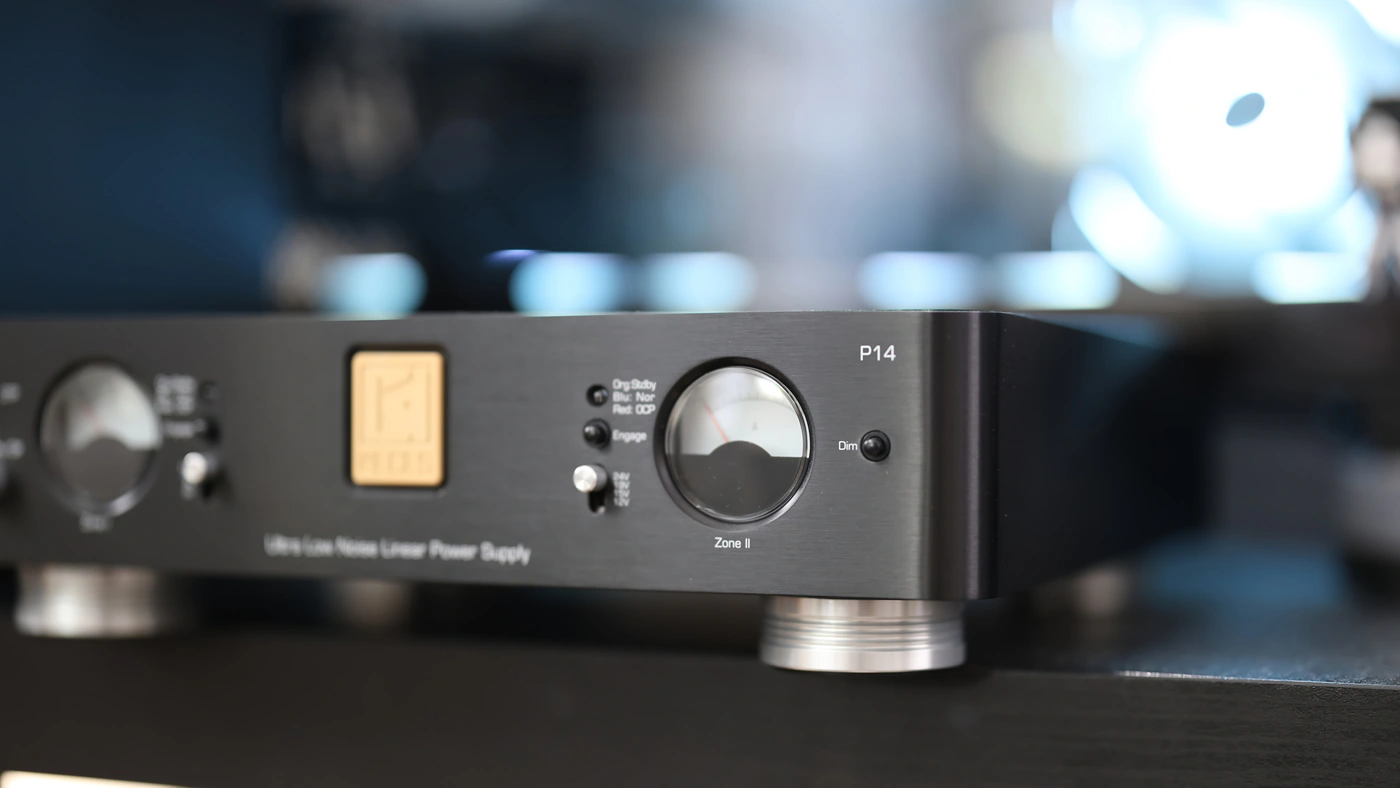
Keces P14 Pier is very stable on the table, and I also had it placed above other devices, including above ECDesigns PowerDAC-SX, not because I am using them together, but because I don’t have quite enough space in the room to keep things separate. In this stack, I even placed Feliks Audio Euforia Evo above P14, each one of them using special padding to avoid any kind of dents or scratches. I can confirm that the Quantum Resonance technology does not interfere with other devices in the same room, or even in the immediate vicinity of P14, and it is an internal process.
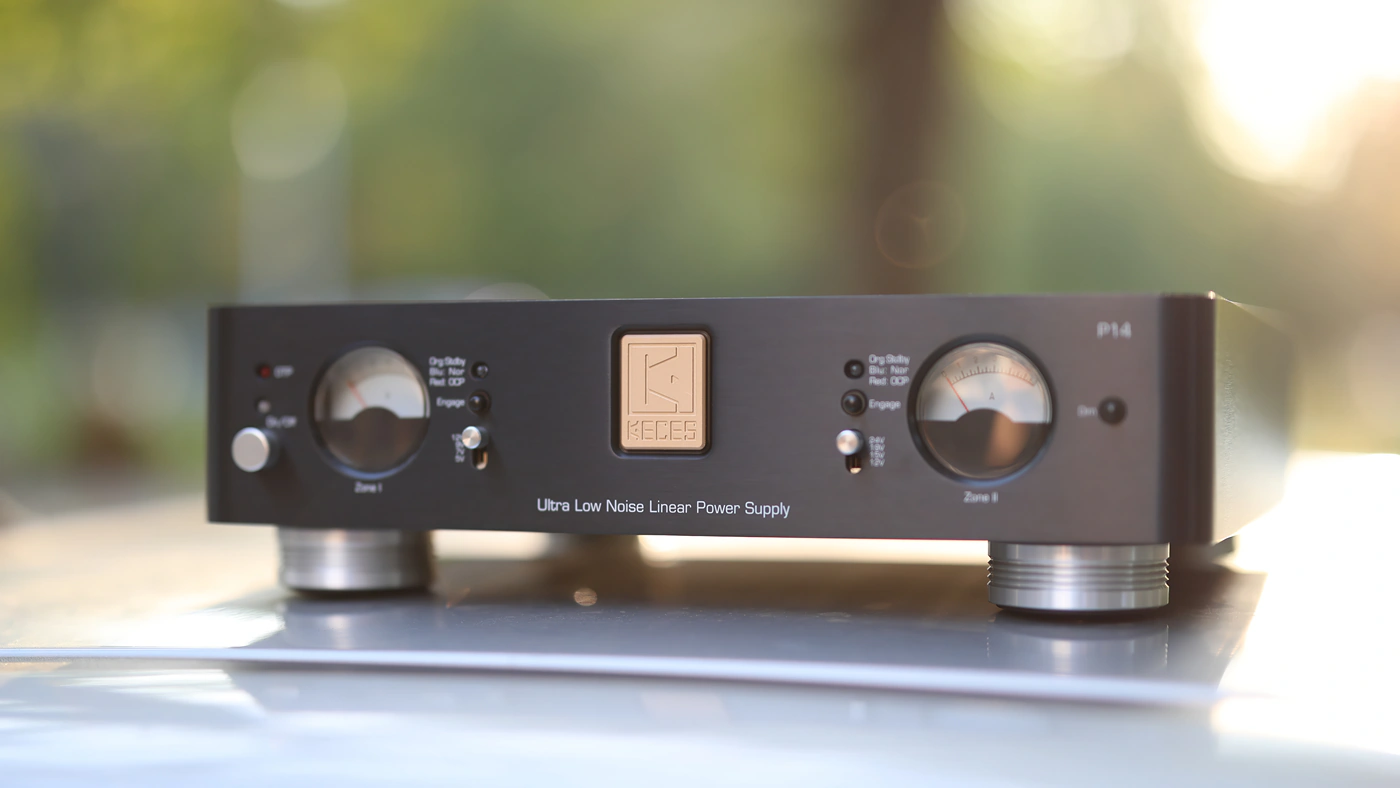
For Zone I and Zone II you can set the voltage using the frontal dials, while for zone III you need to use the DC Out selector at the back. Zone IV has a 5V / 2A signal always. One of the devices I mainly used with P14 is Dethonray Listening M1, and to take full advantage of the P14 better power and sound, you really need to use both the power delivery of P14 and the USB isolator. I noticed that using just the power delivery still had the Listening M1 inherit a lot of audible buzzing and noise from my computer, but using both the USB cleaner and the DC Linear Power Supply of P14 really brings Listening M1 to sound almost the best out of all DAC/AMPs I ever reviewed.
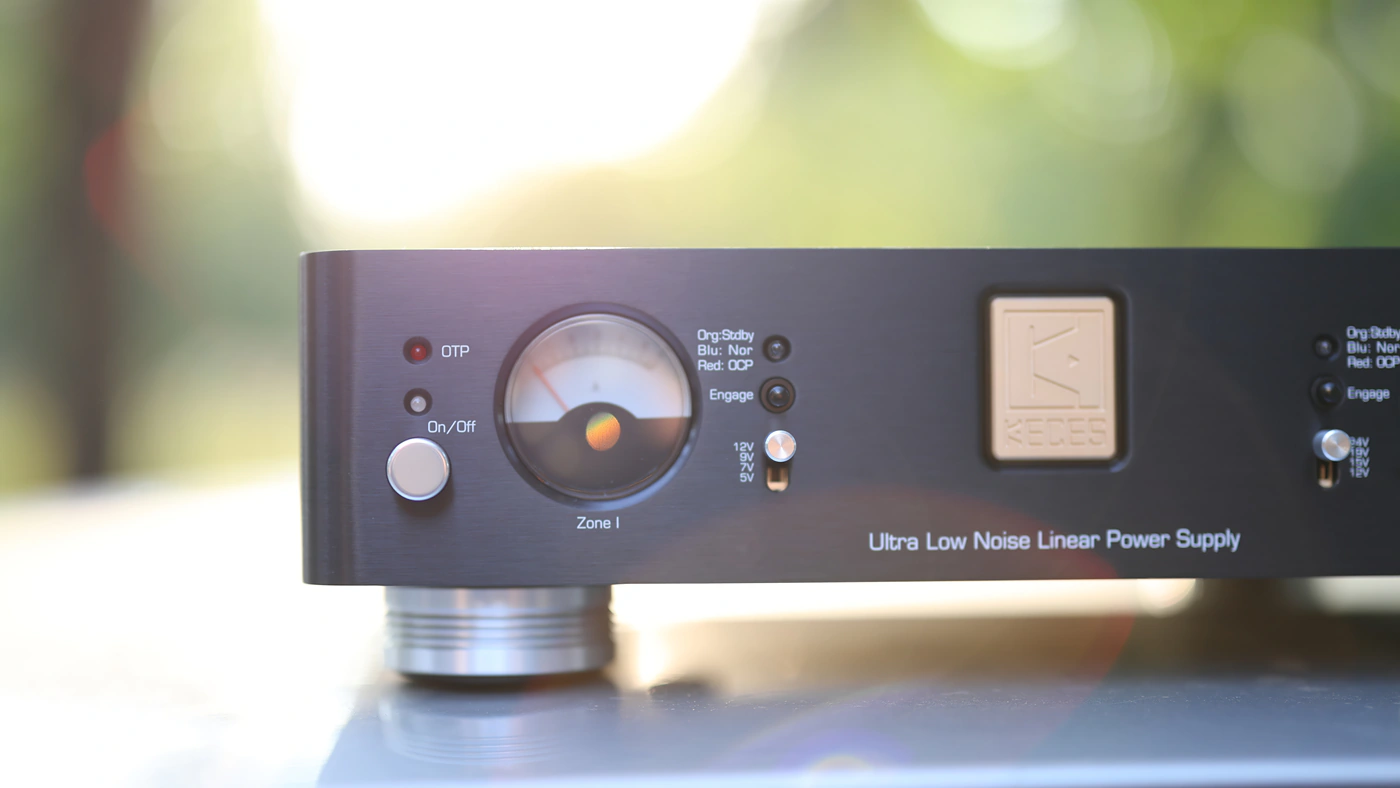
Another interesting note is that the indicator needles on P14 barely move when powering a device that barely consumes current, and Listening M1 will generally consume just 1A of power, so you generally will not notice them active unless your device draws a lot of power from P14. The warmest I could get P14 to be is lukewarm to the touch, and this is using three zones at the same time.
Sound Quality
Pairings – Experimenting with a Linear Power Supply is always fun, because there is no question that one will improve the sound, but hearing with your own ears just how of a difference it can make for a system can be enlightening. I have used P14 to power multiple DAC/AMPs including Dethonray Listening M1, Keces Ebravo, Allo Audio Revolution DAC, Topping Audio A50 III. Every single time I noticed a similar improvement, but the biggest differences are audible with high-end devices that can actually take advantage of the better power and control, so Dethonray Listening M1 transforms into an entirely different device when properly powered by Keces P14. The same happens with Keces Ebravo streamer, which really sounds like a different source.
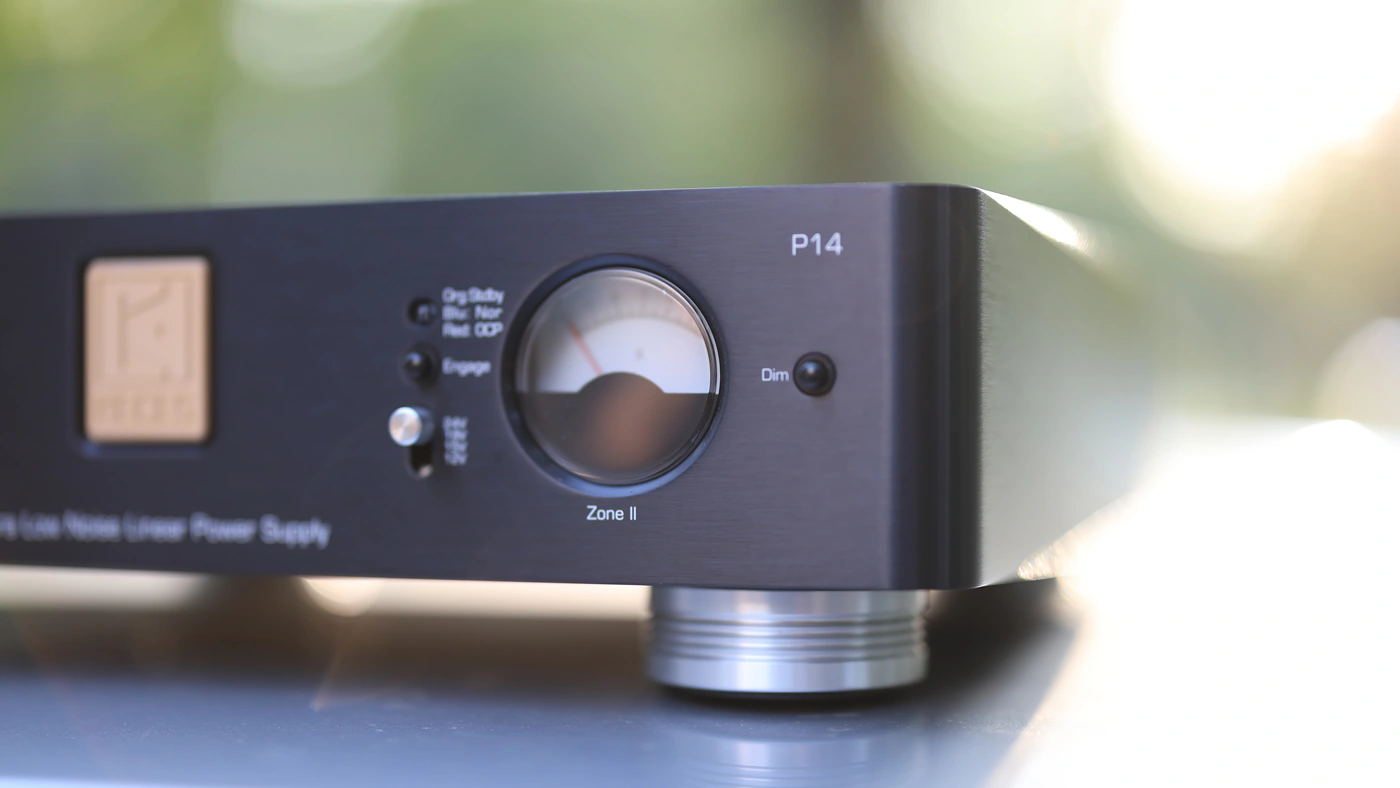
Overall Signature – Especially with Dethonray Listening M1 I can hear how much a Keces P14 can improve the sound, and what it does compared to the original SMPS which is also of a very good quality. The improvements are especially evident in the instrument separation, significantly improved resolution and a much better clarity across all frequency ranges. There’s a far better bass depth and control, with more impact and much lower THD at both low and high volumes. While Listening M1 isn’t known to be quiet with ultra-sensitive IEMS, like Campfire Bonneville, but I cannot hear any kind of noise floor or hissing when M1 is powered by P14, and the whole sound has a much bigger lateral projection, even when using IEMS. I also noticed a huge improvement in the control when using headphones, including Dan Clark Audio Expanse, and T+A Solitaire P-SE. It is good to keep in mind that you can still add another layer of current control by using a Power Conditioner like Plixir Elite BAC 400, and Keces also makes power conditioners, but P14 is an actual AC to DC Linear Power Supply converter. A good portion of the changes I noted in this review can be heard even if using P14 just as a USB Isolator for a DAC that has its own internal supply, like SMSL DO200 PRO, Musician Pegasus II R2R DAC, or HIFIMAN Serenade.
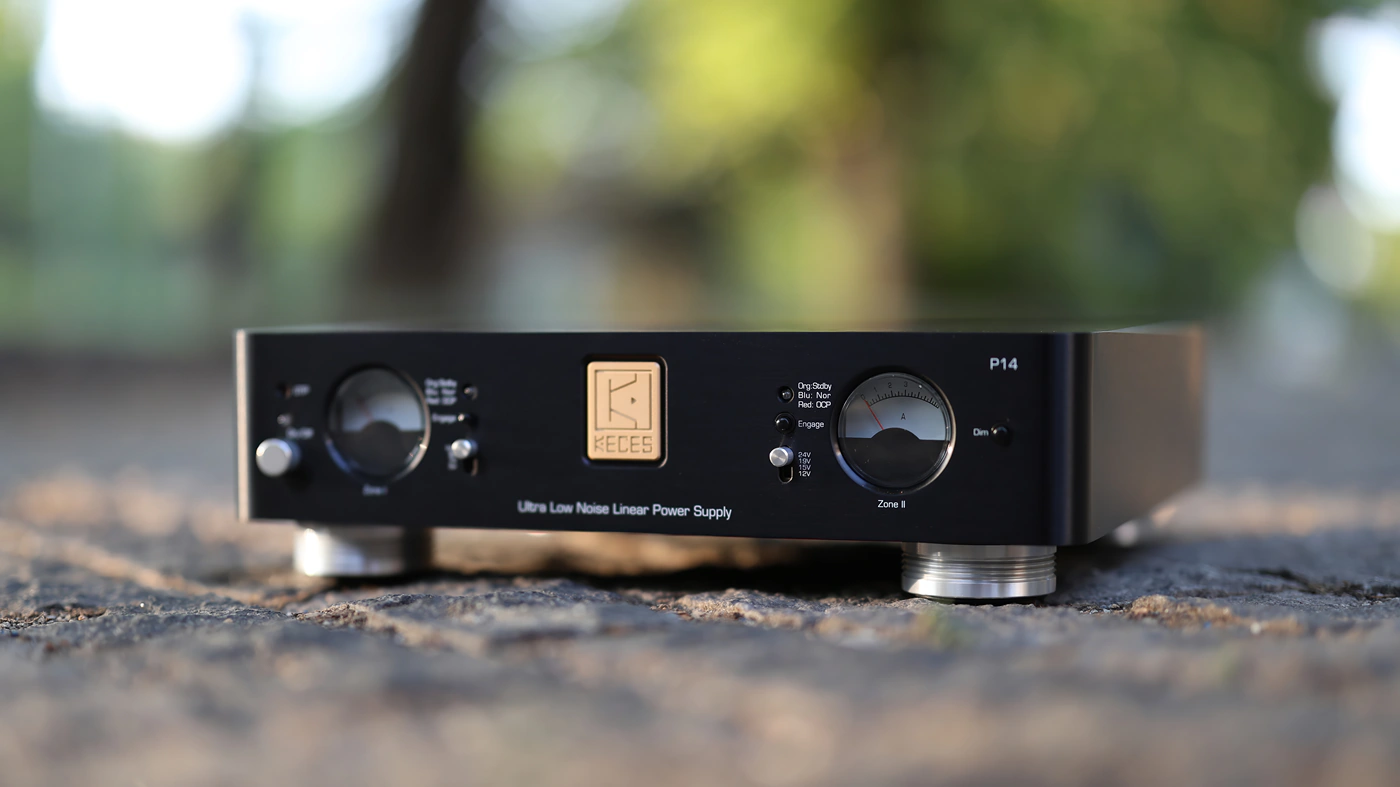
Bass – In the bass I hear a much deeper presence and extension, with a significantly lower distortion, both at loud, and very loud and also at quiet volumes. One interesting thing is that with Listening M1, there is a bit of a buzzing hum without a linear power supply, and using Keces P14 removes this entirely gives it a new level of definition and clarity, improves the overall resolution and precision of the bass, tightens the impact and gives music a more well-defined body and presence.
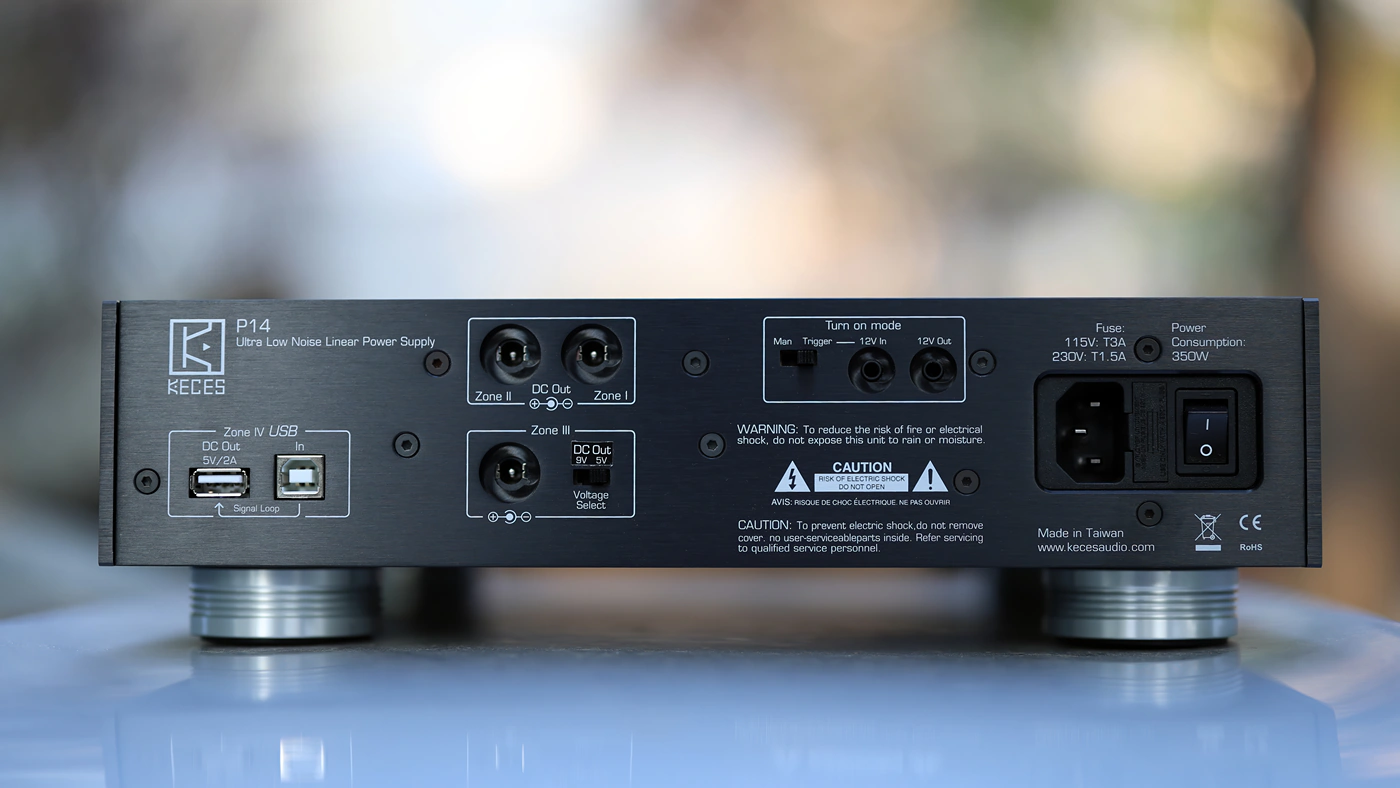
Midrange – The biggest difference will be audible in the midrange, where you can hear a far better instrument separation and clarity, each guitar plays in its own space, and you hear the background instruments making sense, each little guitar or piano key is there, well defined and played in its own space. Music sounds much richer and less distorted, using P14 lowers the total THD considerably and brings forward sounds that were never obvious or which were mingled in with the background noise floor, especially when a song has a high dynamic compression, like for rock and metal. The tonality of most devices is not changed, and a dark sounding DAC/AMP will still sound dark, but its definition can improve heavily, almost like turning off the lights in a cinema, it gives focus to what is truly important and what is music, removing all the rest. Both in Pop Music, but also in rock and metal, lyrics are much easier to understand and each word sounds more defined, more acute and my ears can understand it more easily.
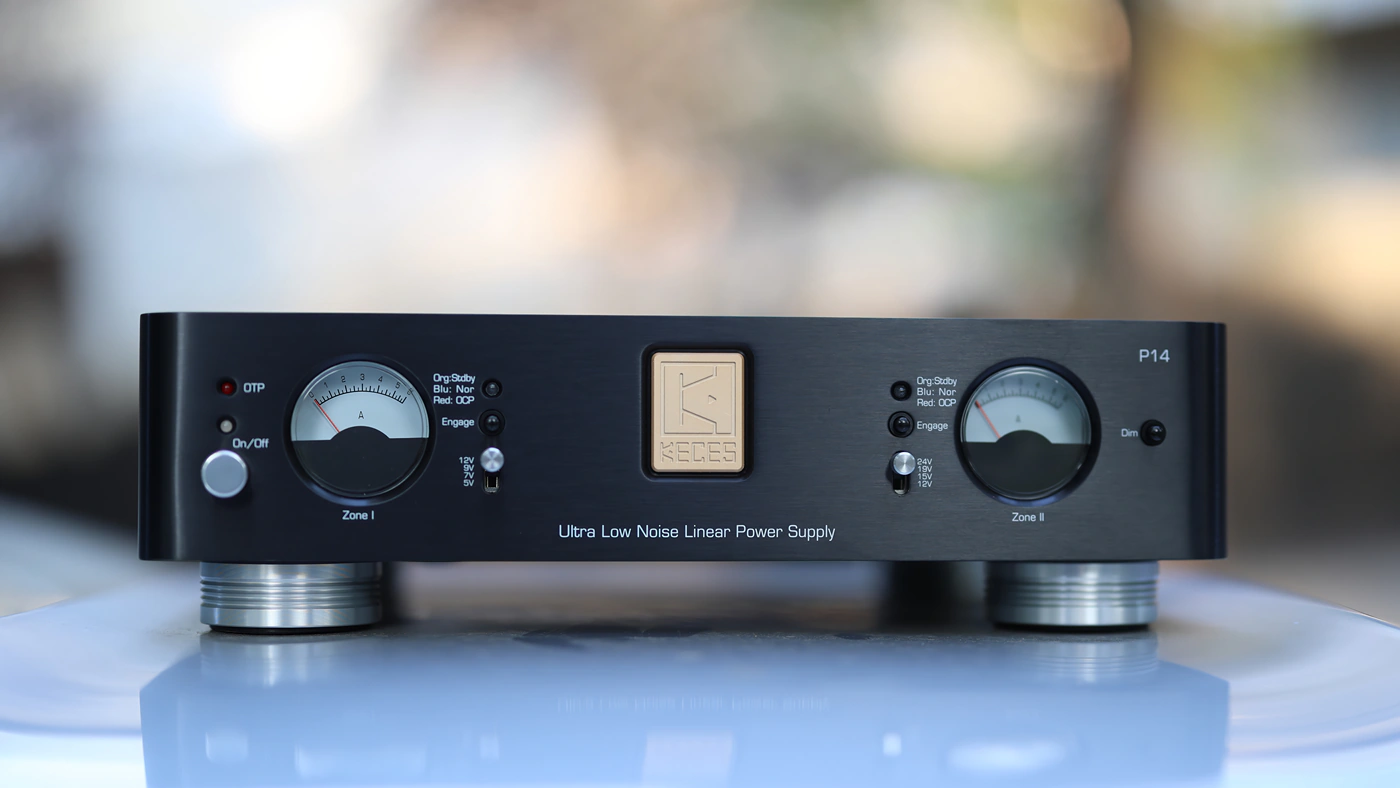
Treble – There’s quite a bit of improvement to be had in the treble too, where high-end THD and distortion usually is audible and changes the meaning of a song, turning a crisp and sharp cymbal crash to a fatiguing mix of sound, so you’ll be glad to hear that P14 doesn’t cut out the treble, but allows it to shine bright and crisp, with a much stronger separation between instruments, more perceived distance between instruments, and better resolution. Using P14 will neither strengthen the treble nor weaken it in presence, but it will most certainly strengthen the resolution the top-end has, improve how much extension you hear, and how each cymbal crash feels more realistic and has the proper texture and crisp definition, even in busy, crowded metal tracks.
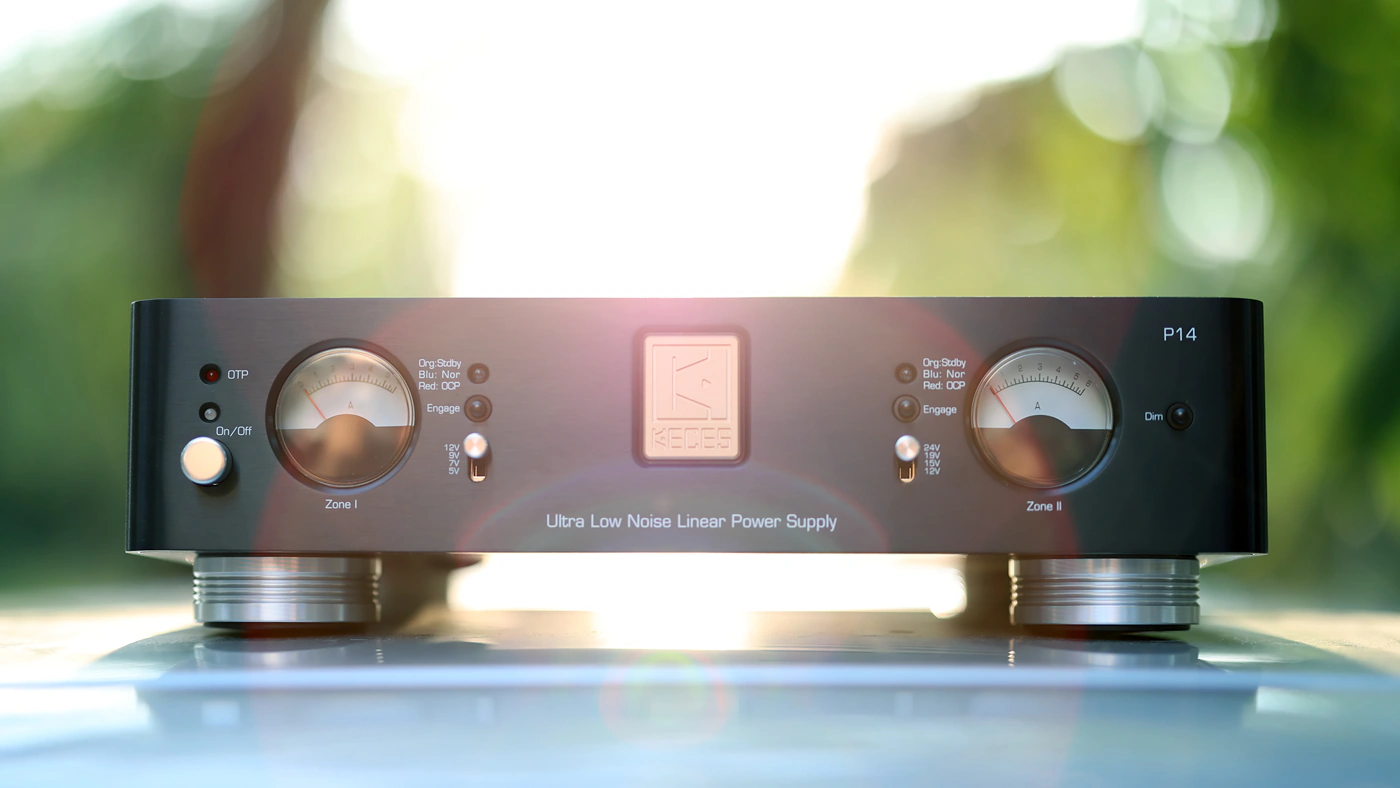
Loudness Saturation Gradient – While P14 cannot change the loudness saturation gradient itself, it does change how much you can enjoy music at low and ultra low volumes, giving you more space to appreciate the control, refined presentation and quiet passages at sub 50 dB listening volumes, but it can also improve the control and lower THD considerably for very high listening volumes. Both of those changes lead to a much better overall listening experience and will create what I consider to be excellence in volume control. While most devices are designed to operate at a medium volume and will struggle with the extremes, P14 can help you take those back and achieve a whole new level of control.
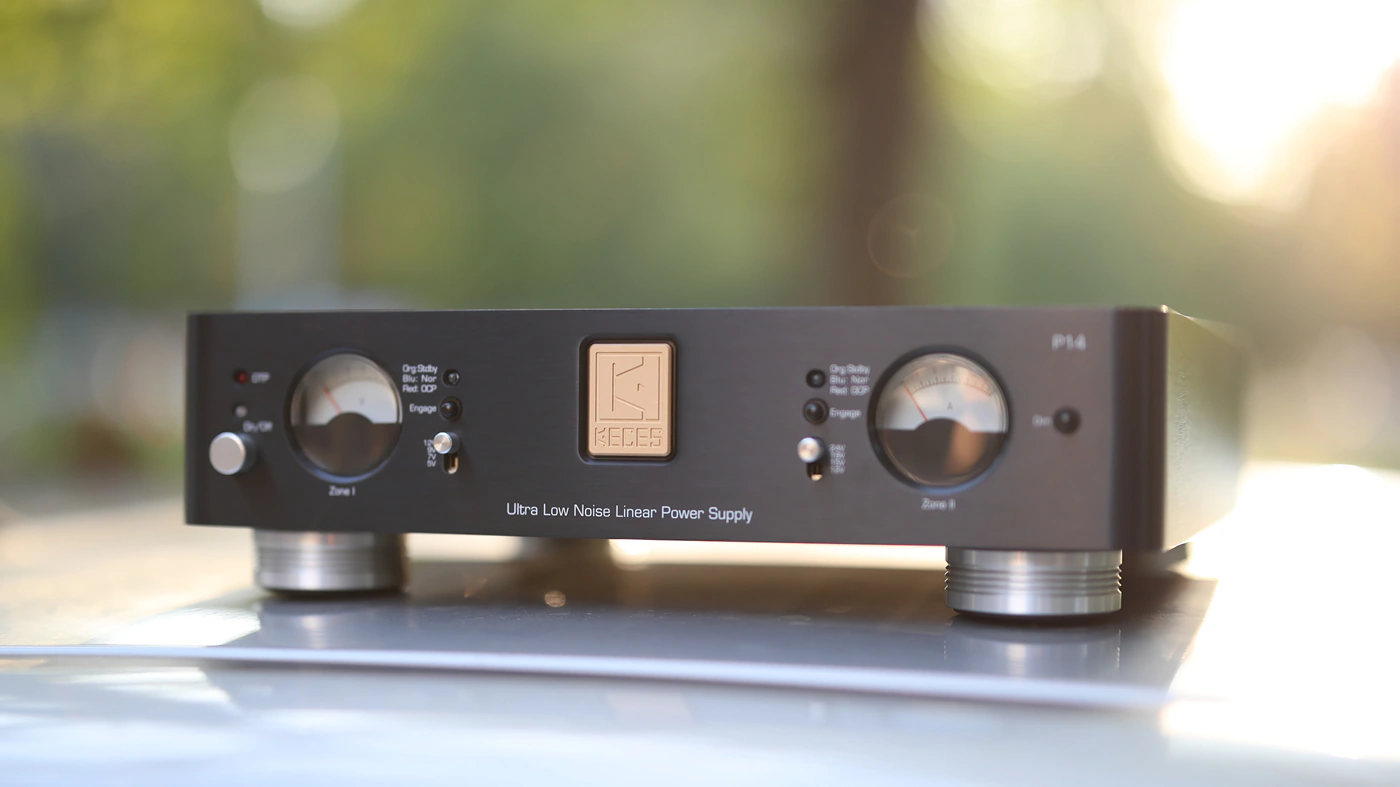
Dynamics Handling – Improving resolution also improves dynamics and sound is always more punchy, more colorful and more dynamic when using P14. The Dynamic range is significantly improved with P14, as it allows the device to present a higher difference in loudness between quiet and loud, it creates a much better definition to each instrument, and also enhances the feeling of dynamism.
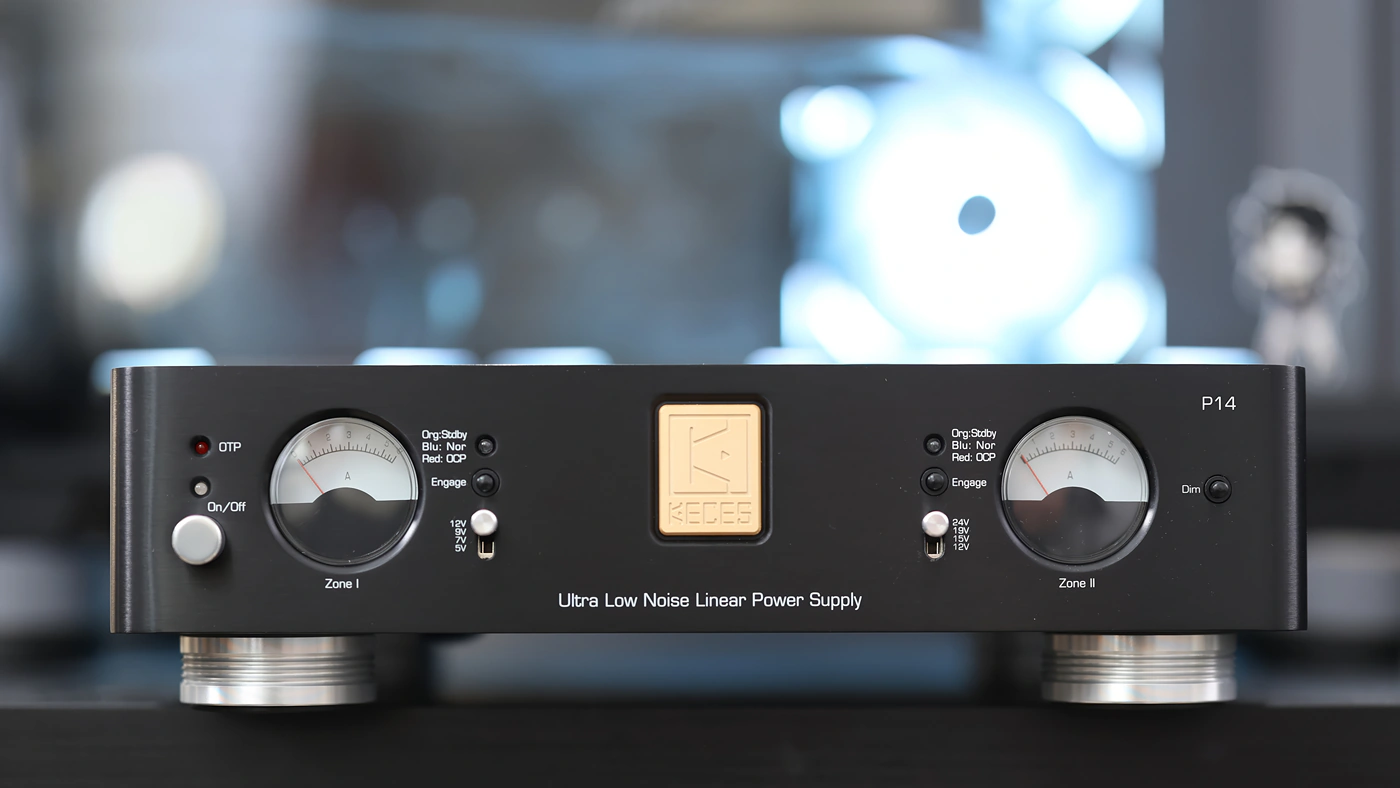
PRaT / Textures – I have not noticed a big change in texture presentation itself and most devices will have a very similar presentation with P14 compared to when using a SMPS, but with the exception that if you lower the THD, music seems less edgy, and more clear, more defined, so textures are cleaner, but they are as extruded and forward with P14, instead if helps you hear those textures quite a bit better.
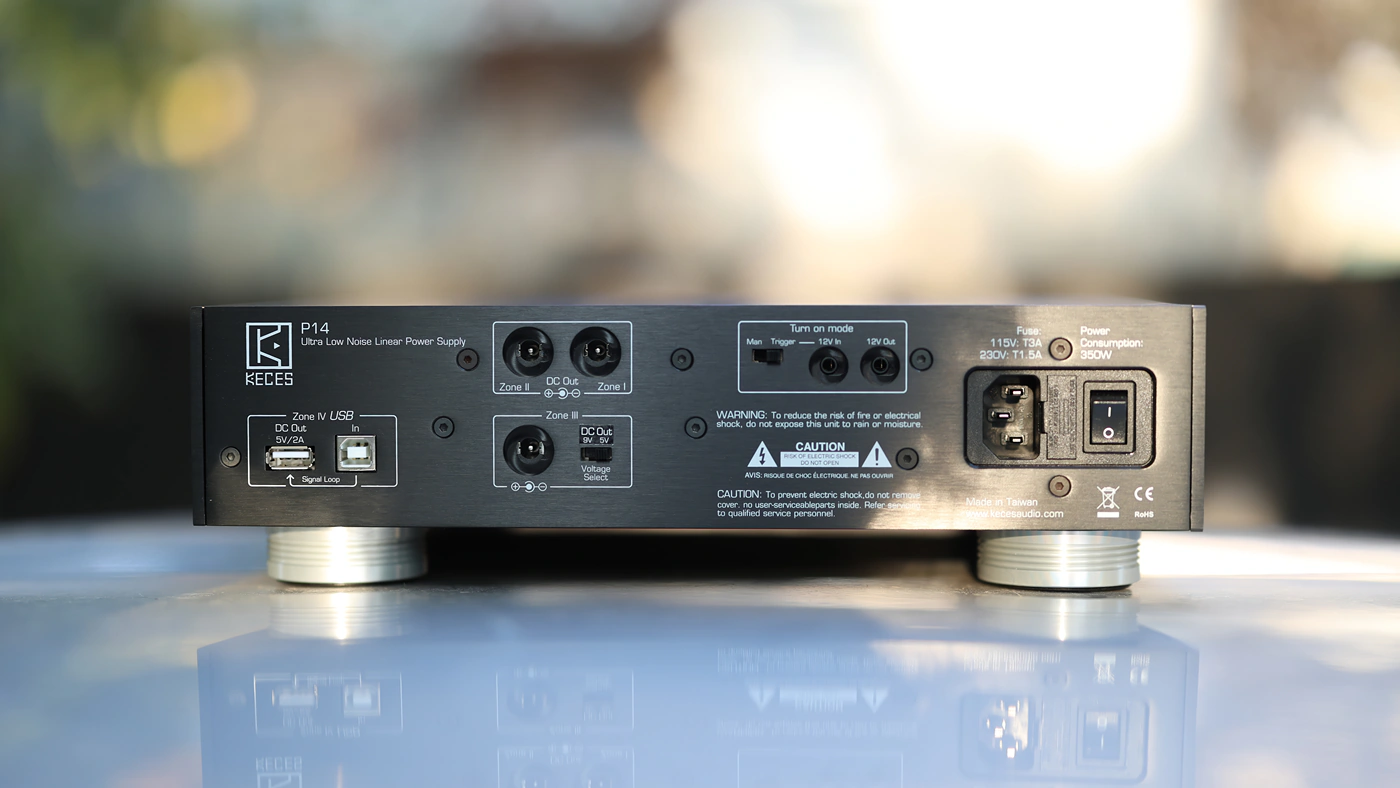
Soundstage – Keces P14 surely enhances the soundstage, it helps most devices project music farther away from you, with a much stronger instrument separation, and a wider, more holographic soundstage. The difference can be huge, and even an intimate sounding DAC/AMP can become much wider sounding.
Value and Conclusion
With the tag of $1749 USD, Keces P14 sure isn’t cheap, but the chassis, construction quality and the toroidal transformer make a huge part of the price, it is a marvel of engineering, along with the changes it can bring to a DAC/AMP or Streamer, the improvement and quality of P14 being fully worth the asking price. In fact, I am dowright flabbergasted by how little talk there is about the importance of a high-end linear power supply in a system, considering the level of improvement I am hearing while using P14.
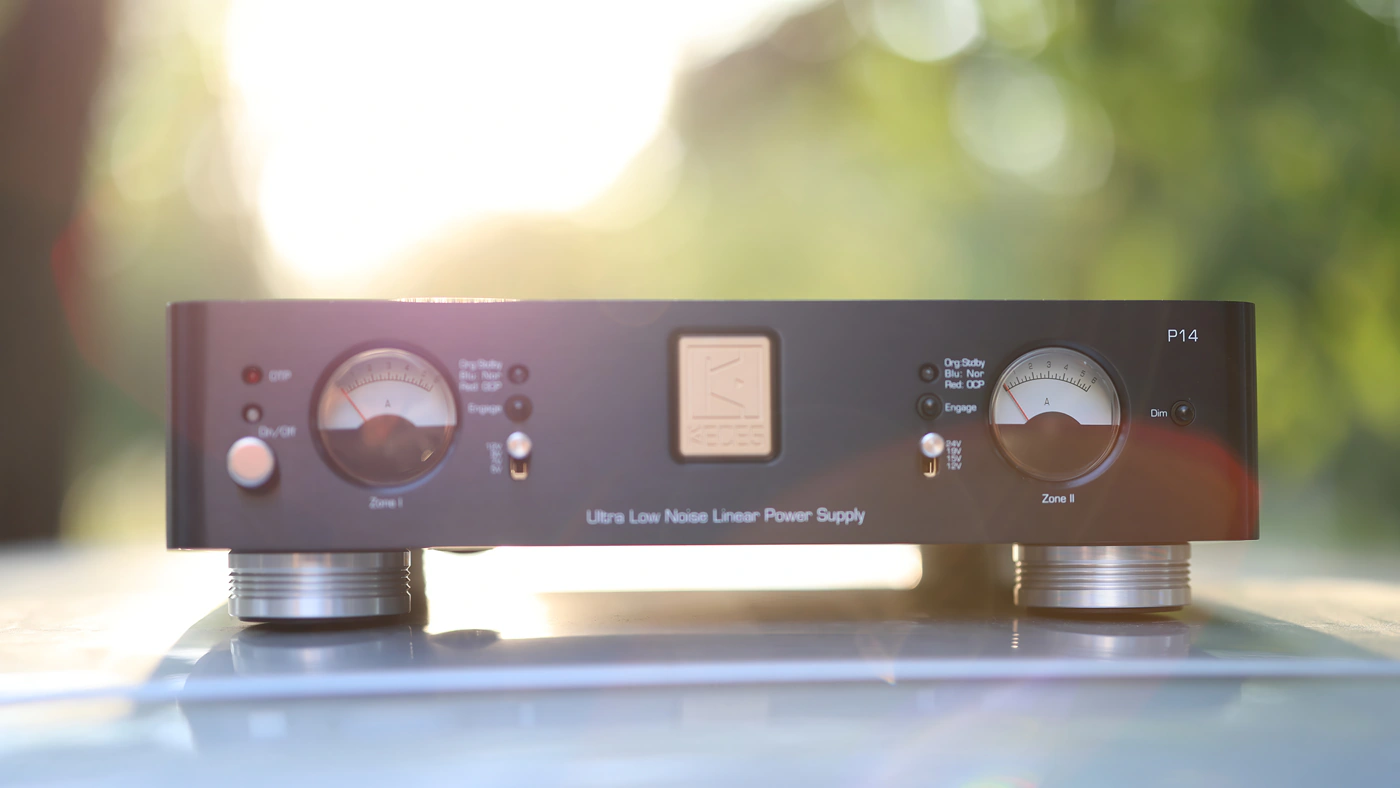
Award – Before the end of today’s review, we award Keces P14 the Audiophile-Heaven Hall Of Fame award, it is not just a huge upgrade for devices powered by DC, but also the best sounding USB isolator having no quantization noise, but a perfectly clean and crisp sound that removes all influence of my PC’s noisy PSU and GPU from my music and my sound.
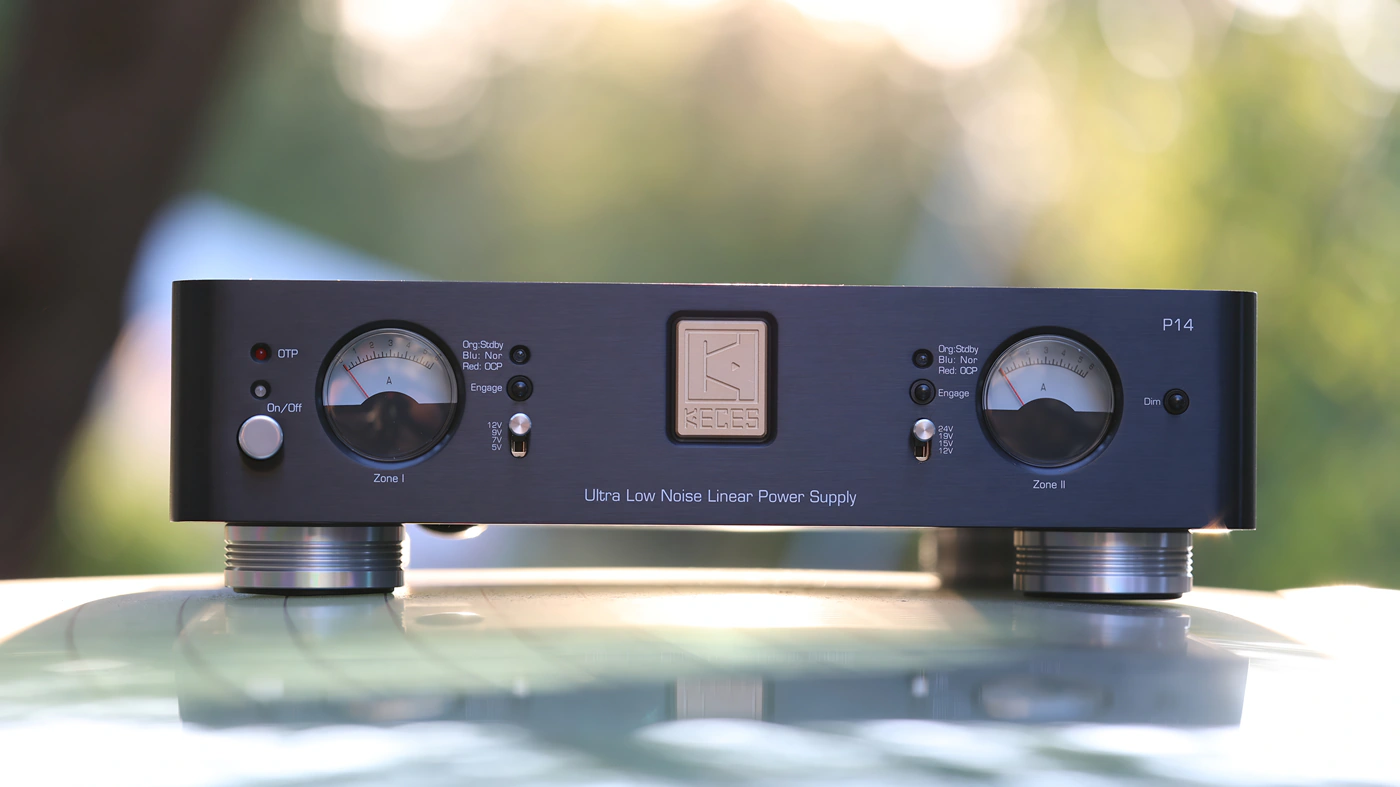
At the end of the day, there are many reasons to purchase P14, and if you’re running a compatible DAC / AMP / Streamer that can take advantage of an external Linear Power Supply, Keces P14 is an excellent choice, having superb sonic performance, staying cool and being the best sounding USB Isolator on the market at this moment, and a full recommended purchase on audiophile-heaven.
Product Link
Official link – https://www.kecesaudio.com/P14.html
Amazon – https://amzn.to/3YO385J
--- Please remember to stay safe, and always have fun while listening to music!---
- If you have a dime to spare, please donate, and help us! It would make the day brighter for me and my wife-
Full Playlist used for this review
We listened to more songs than those named in this playlist, but those are excellent for identifying a sonic signature. I recommend trying most of the songs from this playlist, especially if you’re searching for new music! The playlists are different for Spotify, Tidal and Youtube, and based on the songs I enjoy and are available on each!
https://www.youtube.com/playlist?list=PL_cjBXGmwSHSdGcwuc_bKbBDGHL4QvYBu
https://open.spotify.com/playlist/5J3oloz8Riy9LxEGenOjQ0?si=979ba4f082414be7
https://tidal.com/browse/playlist/330fd544-8e5b-4839-bd35-676b2edbb3d5
--- Contact Us ---





